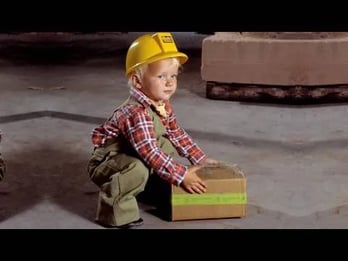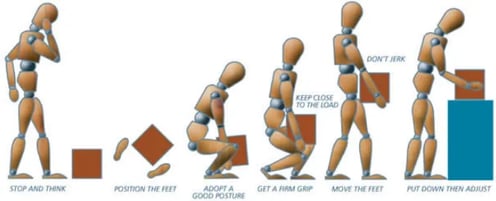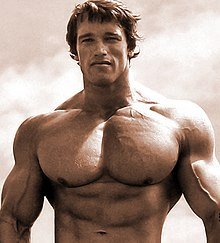This past weekend the time came for CES’s big relocation! With this heat and 35 years worth of our business to move we could certainly call on Arnie and those muscles for a bit of help! Not that we haven’t got a few muscles between us! However bulging those biceps and prominent those pecs, I do wonder if Mr Schwarzenegger is clued up in his manual handling, after all you can have all the muscles in the world but still not know how to lift correctly. Manual handling seemed a particular topical Toolbox Talk for the team over the past week given the exciting move we have just completed!

Manual handling is all about the way we lift, lower, push, pull and carry which of course happens in many working environments but in our industry these actions are integral to our jobs. You would think that lifting is pretty straightforward, after all we’ve done it since childhood. Think about that little prolonged squat that toddlers do before lifting (no doubt something they shouldn’t have). Unfortunately with the fast paced world we live in, there is a desire to do everything quickly. Firstly we don’t assess the situation and secondly we become lazy in our positioning. Incorrect manual handling and consequently musculoskeletal disorders (MSDs) account for a third of all work place injuries and can lead to 9.5 million working days lost per year. Most crucially a damaged back is permanent, there is no cure. So next time you go to pump some iron like Arnie or simply lift a box at work think about the following steps.
First of all none of us are going to work with the aim of sculpting a six pack through lifting 30kg so if lifting can be avoided this is your best bet, or consider mechanical aids such as hoists, pallet or forklift trucks. If lifting can’t be avoided you should be assessing the situation; remember the those rigorous checks you would do in driving lessons/tests, the ones that are now second nature (aka mirror, signal, manoeuvre) well we should have a similar set of checks before lifting. Let’s set our assessment check as Know, Clear, Weight, Protection, Trial (not sure this will catch on!) but in essence these five points mean…
-Know your capabilities
-Clear the walkway
-Establish the weight of the item
-Protect yourself with gloves and safety boots
-Trial lifting the item before carrying it a distance
Once you’ve assessed the situation you should now reduce the risk of any injuries by following these handling techniques.
-Stand reasonably close to the load, feet hip-width apart, one foot slightly forward pointing in the direction you are going
-Flex your knees and slightly curve your back (avoid bending too far forwards or a deep squat when starting a lift) but remember a good technique is about using the strong muscles in your legs
-Get a secure grip on the load
-Keep the load close to your body but don’t carry a load that obscures your vision
-Lift slowly and smoothly, avoiding jerky movements
-Avoid twisting your body
-When lifting from a height from the floor, do it in two stages if possible
-When two or more people lift a load, one person must give directions to co-ordinate the lift
Manual handling assessment charts (MACS) have further detail on the specifics of lifting, carrying and team handling operations take a look there (link below).
Last weekend CES closely referred to this guidance as we packed up our Binders Yard Site and said hello to Cressex and hey, who needs Arnie and those muscles when you’ve got us!
For further information including downloadable MAC tools please click here.
Click here for a fun reminder of how to go about lifting and carrying items.
